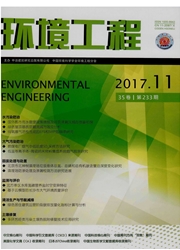

 中文摘要:
中文摘要:
为探究城市景观水体中浮萍对水华暴发的影响,于2015年3—9月在4处典型的景观河道进行采样点布设和检测分析。现场观测从2015年4月2日开始,各采样点陆续出现浮萍,且随着时间的延长,发现浮萍和水华是可以同时存在的;再将检测数据与2014年未出现浮萍生长覆盖的数据进行对比分析可知:浮萍对藻类的生长产生了竞争抑制,推迟了水华的暴发时间,减小了水华的暴发次数;对造成该结果的原因进行显著性分析可得:浮萍对藻类的抑制作用不主要表现在光照的遮挡,而主要是对营养盐的竞争,在有大量的浮萍生长覆盖时,TP成为了限制藻类生长的因素,而TN并不是藻类生长的限制性因素。
 英文摘要:
英文摘要:
In order to investigate the influence of duckweed on blooms in landscape waterbody,the sampling points were laid out in four types of landscape rivers with different characteristics,and analyzed subsequently during March to September,2015. The in-situ observation was started from April 4th,2015. The observation showed that duckweed appeared in succession in each sampling point,and the appearance of the duckweed and the blooms accompanied together later on. The data comparison of the present study and that of 2014 when there was no duckweed growth,showed that the growth of the duckweed had a competitive inhibition on the algae,which resulted in the post-bloom of the blooms,and reduced the bloom frequency as well. The significant analysis showed that the inhibition effect of the duckweed on algae was owing to the nutrient,not the keep-out of sunlight; and TP rather than TN was the limitation factor on the growth of the algae during the outbreak period of the duckweed.
 同期刊论文项目
同期刊论文项目
 同项目期刊论文
同项目期刊论文
 Phosphorus bioavailability in a phosphorus-abundant system under repeated sediment resuspension cond
Phosphorus bioavailability in a phosphorus-abundant system under repeated sediment resuspension cond Contributions of phosphorus on sedimentary phosphorus bioavailability under sediment resuspension co
Contributions of phosphorus on sedimentary phosphorus bioavailability under sediment resuspension co 期刊信息
期刊信息
